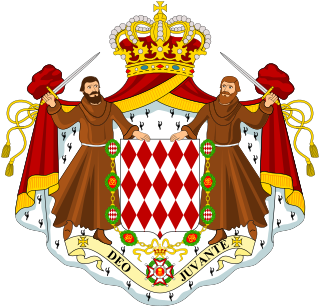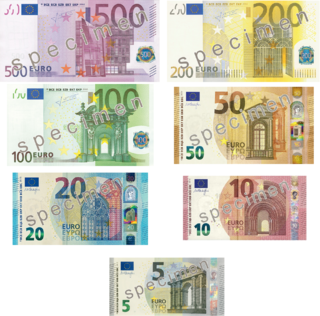
The standard circulating coinage of the United Kingdom is denominated in pounds sterling, and, since the introduction of the two-pound coin in 1994, ranges in value from one penny to two pounds. Since decimalisation, on 15 February 1971, the pound has been divided into 100 (new) pence. From the 16th century until decimalisation, the pound was divided into 20 shillings, each of 12 (old) pence. British coins are minted by the Royal Mint in Llantrisant, Wales. The Royal Mint also commissions the coins' designs.
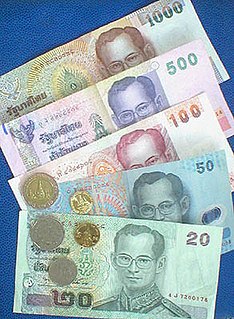
The baht is the official currency of Thailand. It is subdivided into 100 satang. The issuance of currency is the responsibility of the Bank of Thailand.

The Mexican peso is the currency of Mexico. Modern peso and dollar currencies have a common origin in the 15th–19th century-Spanish dollar, most continuing to use its sign, "$". The Mexican peso is the 10th most traded currency in the world, the third most traded currency from America, and the most traded currency from Latin America.

The lek is the official currency of Albania. It was formerly subdivided into 100 qindarka, but qindarka are no longer issued.
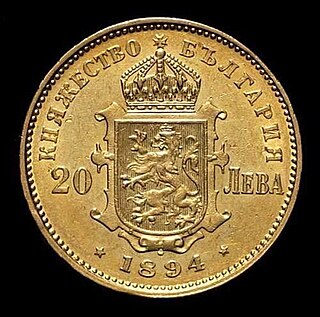
The lev is the currency of Bulgaria. It is divided in 100 stotinki. In archaic Bulgarian the word "lev" meant "lion", a word which in the modern language became lăv. Stotinka comes from the word "sto" (сто) - a hundred.

The Brunei dollar, has been the currency of the Sultanate of Brunei since 1967. It is normally abbreviated with the dollar sign $, or alternatively B$ to distinguish it from other dollar-denominated currencies. It is divided into 100 sen (Malay) or cents (English). The Brunei dollar is issued by the Autoriti Monetari Brunei Darussalam.

The peso is the currency of Argentina, identified by the symbol $ preceding the amount in the same way as many countries using dollar currencies. It is subdivided into 100 centavos. Its ISO 4217 code is ARS.

The eagle was a United States $10 gold coin issued by the United States Mint from 1792 to 1933.
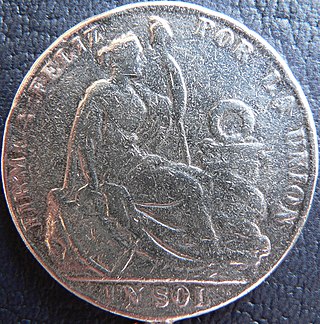
The sol was the currency of Peru between 1863 and 1985. It had the ISO 4217 currency code PES. It was subdivided into 10 dineros or 100 centavos.

The Goldmark was the currency used in the German Empire from 1873 to 1914. The Papiermark refers to the German currency from 4 August 1914 when the link between the Mark and gold was abandoned.
Philippine peso coins are issued by the Bangko Sentral ng Pilipinas for circulation in the Philippines and are currently available in six denominations. The Philippine peso has been in use since Spanish rule.

The Dutch guilder or fl. was the currency of the Netherlands from the 17th century until 2002, when it was replaced by the euro. Between 1999 and 2002, the guilder was officially a "national subunit" of the euro. However, physical payments could only be made in guilder, as no euro coins or banknotes were available. The Netherlands Antillean guilder is still in use in Curaçao and Sint Maarten, but this currency is distinct from the Dutch guilder. In 2004, the Surinamese guilder was replaced by the Surinamese dollar.

The Swiss franc has been the currency of Liechtenstein since 1920. The Swiss franc is legal tender since Liechtenstein is in a customs and monetary union with Switzerland. The 1980 treaty between Switzerland and Liechtenstein allows Liechtenstein to mint limited amounts of Swiss francs with a Liechtenstein inscription, but only in the form of commemorative coins, and they are not allowed to issue banknotes.
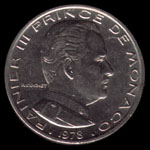
The franc was the official currency of the Principality of Monaco until 1995, when it changed to the French franc. The franc was subdivided into 100 centimes or 10 décimes. The Monégasque franc circulated alongside the French franc with the same value. Like the French franc, the Monégasque franc was revalued in 1960 at a rate of 100 old francs = 1 new franc. The official euro-to-franc exchange rate was MCF 6.55957 to EUR 1.

The 2 euro coin (€2) is the highest value euro coin and has been used since the introduction of the euro in 2002. The coin is used in 22 countries with a collective population of about 341 million. The coin is made of two alloys: the inner part of nickel brass, the outer part of copper-nickel. All coins have a common reverse side and country-specific national sides. The coin has been used since 2002, with the present common side design dating from 2007.

This is an outline of Uruguay's monetary history. For the present currency of Uruguay, see Uruguayan peso.

This article provides a historical summary of the currency used in Venezuela since the end of the 18th century. For the present currency of Venezuela, see Venezuelan bolívar.

The postal history of Monaco can be traced to the principality’s first postmark in 1704. Stampless covers are known with both manuscript and handstamp postmarks for Monaco and Fort d'Hercule ; as the principality was once much larger, postmarks of the communes of Menton and Roquebrune prior to their 1848 secession might also be included. Monaco used Sardinian stamps from 1851 until 1860, when by the Treaty of Turin, Sardinia ceded to France the surrounding county of Nice and relinquished its protectorate over Monaco; French stamps with Monaco or Monte-Carlo postmarks were used thereafter. Two forms of cancellation are known for the French period. With the first, the postmark is on the cover away from the stamps; an obliterator with an identifying post office number 4222, or later 2387, inside a diamond of ink dots cancelled the actual stamps. The second applied the postmark directly on the stamps, as both a date stamp and cancel. All of these postal forerunners, particularly usages of Sardinian stamps with Monaco cancels, are far more valuable than the same stamps postally used in the issuing countries.
